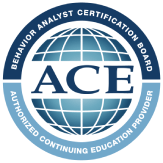No, ABA therapy doesn’t replace school. Instead, ABA should be seen as a complementary tool that can enhance your autistic child’s school experience. Both school and ABA help your child develop necessary academic and life skills, but their approaches are different.
Learn how to integrate ABA therapy and school with minimal stress for your family.
ABA Therapy vs. Public School: What’s the Real Difference?
Both ABA therapy and school have many similarities, especially for younger children. However, their differences are crucial for a child with autism’s development.
| Elements | School | ABA Therapy |
| Structured Environment | Yes | Yes |
| Routine(s) to Follow | Yes | Yes |
| Trusted Leader to Listen to | Yes | Yes |
| Learning Goals | No | Yes |
| Social Opportunities | Yes | Yes |
| 1:1 Support | No | Yes |
| Different Learning Strategies | No | Yes |
| Encouraging Independence | No | Yes |
Structured Environment
A school provides structure through its schedule and the various tasks with due dates. A child with autism can learn to rely on their teacher to tell them what to do and when. They will begin to understand what’s expected of them and what happens if they don’t meet those expectations.
ABA also has a schedule to follow and tasks to complete. However, they can also change more easily.
Routine(s) to Follow
School occurs on specific days and for a certain number of hours. Class changes, lunch, and recess are always at the same time, creating predictability that children with autism find comfort in.
With ABA Therapy, while there is structure, we can also teach children to be flexible with changing schedules that mimic the real world. After an assessment, the therapist and parents or caregivers will decide how often to have ABA sessions.
Trusted Leader to Listen To
Having a trusted authority figure is crucial for all children. Having someone to go to when something is wrong or to guide you through the day allows children to grow and develop.
In school, those figures are teachers, teacher’s assistants, guidance counselors, or the principal. In ABA therapy, it’s the therapist, the RBT (registered behavioral technician), or BT (behavioral technician).
Learning Goals
Schools focus on teaching children academic subjects from a standard curriculum. While they do offer behavior and social skills development, they often take a secondary focus. However, many teachers want to help their students become strong, independent people.
ABA therapy develops various life and behavior skills with the focus of helping clients thrive in life. These can include motor, social, communication, daily living skills, and much more. What ABA therapy concentrates on depends on the client instead of a curriculum.
Social Opportunities
A class full of children creates natural opportunities for social development and friendships. Recess and group projects are chances for a student with autism to practice their skills in smaller groups.
It’s worth keeping in mind that students with autism may need additional support or preparation to thrive in this environment.
Often, ABA therapy is 1:1, so the client is comfortable and can focus on developing their skills. Socialization is incorporated based on the child’s specific social level and goals, and can include peer and adult interactions.
1:1 Support
1:1 support is often not available due to a classroom full of students. While teachers try their best, there are simply too many students who need their attention. Sometimes, schools have paraprofessionals who can assist students, but they may also have several students under their care.
ABA therapy is specifically designed to provide 1:1 support for the client. Whether at home, a therapy center, or a school, the client is the sole focus of the ABA team.
Different Learning Strategies
Schools don’t offer many different learning styles for students. Teachers often have a set curriculum they must follow with little leeway. Some teachers do their best to assist students who don’t learn in the “traditional” way, but again, they have so many students that they can’t offer long-term assistance.
ABA therapy uses a diverse set of techniques to teach clients the skills they need. Therapists customize their intervention plans based on their clients’ needs, which increases the chance of success and minimizes the stress the client may feel during the process.
Encouraging Independence
Schools encourage students to solve problems and resolve conflicts through communication, and hold them accountable for their behaviors. ABA therapy uses various strategies to help clients become more independent when they are ready, such as reinforcement and faded prompting.
This individualized care is the major difference between the two.
When ABA Therapy Might Temporarily Replace School
While ABA therapy cannot replace school, parents can choose to focus on ABA for preschool-aged children. This is only because there is a greater crossover between ABA and preschool compared to older grades.
You may hear ABA therapists call this time period “early intervention.” Early intervention is when very young children, under the age of six begin ABA. It’s important because young children have greater neuroplasticity, which is the ability to learn behaviors and habits.
How Do I Know If My Child Is Ready for School?
It can be scary to send your child to school if you aren’t sure. While some developmental milestones show school readiness, we believe parents should also trust their intuition. If you aren’t sure, talk to your ABA therapist.
School-ready milestones include:
-
- Your ABA supervisor feels they are ready.
-
- Your child speaks in complete sentences or expresses themselves enough to get their needs met.
-
- Your child can follow directions.
-
- They interact with children positively.
-
- Your child can perform basic daily life tasks (going to the bathroom, washing hands, feeding themselves, etc.).
-
- They feel comfortable being away from their parents.
-
- Your child can sit and listen.
Can ABA Therapy Help Prepare Children for School?
Yes, ABA therapy can help prepare children for school. In fact, many ABA therapy centers, including Spectrum Behavioral Therapies, have a “school readiness” program.
The program will help with:
-
- Sitting still: Many students with autism can struggle with sitting still. ABA sessions can focus on having the client sit still for incrementally longer periods to get used to doing so. They will then receive positive reinforcement so they understand that sitting isn’t a bad thing.
-
- Listening to instructions: Some students with autism struggle with listening and processing instructions, which affects their education. ABA will develop the skills needed for clients to listen and follow instructions.
-
- Communication: ABA therapists work with the client to enhance their communication skills so they can better express their needs to teachers and peers alike. This will also help them navigate social situations.
-
- Social skills: Clients can learn how to share and play with others, how to wait their turn, and other social cues needed to interact with peers.
-
- Transitioning from home to school: Changes in environment and routine can be very distressing for students with autism. ABA therapy can help support the client through the transition and teach coping skills.
-
- Self-regulation: ABA teaches clients how to regulate their feelings and behaviors to reduce the chance of maladaptive behaviors. They will also learn coping skills they can do on their own.
-
- Task persistence: Through ABA, clients will learn how to follow through with tasks, such as assignments. Often, the sessions will have a client tackle a task in small steps until they can develop the endurance to do a task completely in one go.
Depending on the program, ABA therapists will also work with schools to assist clients during the day. For example, Spectrum Behavioral Therapies offers on-site support and collaborates with teachers to ensure that a client can learn without disrupting other students.
Best Practices for Combining ABA and School
You can do ABA therapy and school simultaneously. Depending on your child’s needs, you can either do ABA before and/or after school or have someone from the ABA center with your child during school.
Here’s what to do to ensure support both at home and at school:
Create a Supportive Team
You need to ensure that your ABA therapy team, teachers, and school officials are on the same page. Establish your child’s needs and how the school can provide support. This may require multiple meetings.
Ensure You Have Accommodations in Place
Schools are required to accommodate disabled children thanks to the Americans with Disabilities Act (ADA) and the Individuals with Disabilities Education Act (IDEA).
Through these Acts, your child can have an Individualized Education Program (IEP) or a 504 Program.
An IEP is a free service for disabled students who qualify under the IDEA in public schools. It lists the goals and accommodations the student needs. To receive an IEP, you must get a referral and evaluation.
Nemours® KidsHealth® has a great resource for parents regarding IEPs.
The 504 program is from Section 504 of the Rehabilitation Act, which forbids any organization that receives financial aid from the Department of Education from discriminating against students with disabilities. These organizations must provide a “free appropriate public education” (FAPE) to students who need it.
While similar to IEPs, a larger group of students is eligible for 504s than for IEPs. Your child will also have to be evaluated before a 504 can be put in place for them.
Note that while the underlying laws (IDEA and Section 504/ADA) continue to guide schools, regulatory changes and shifts in enforcement priorities may affect how accommodations are implemented in the future—so families should stay alert and engaged.
Constant Check-Ins
Your child’s support team should consistently communicate with one another to ensure the accommodations are still working and if there are any gaps to address. As your child progresses through school, their needs will change. They may need fewer accommodations due to growth or need more due to a setback.
Everyone on the team must be on the same page and up to date with your child’s behavior and needs.
Don’t Be Afraid to Advocate When Needed
If there are any issues with your child’s accommodations, you will need to advocate for them. It can be hard, especially if the school doesn’t understand why these accommodations are so important for your child.
Here are a few helpful tips to make advocating easier:
-
- Keep all your paperwork together.
-
- Print copies of relevant documents or conversations to share.
-
- Ask for clarification if something doesn’t make sense.
-
- Take notes of each meeting.
-
- Ask professionals to help or come to meetings.
Common Questions Parents Ask About ABA and School
If you still have questions, they may be answered below.
Are there age limits or specific school stages where ABA is most helpful?
ABA is the most helpful for young children due to their neuroplasticity, as mentioned above. Starting before your child goes to school also allows more time to dedicate to ABA sessions.
However, ABA therapy can help people of all ages.
What happens if my child’s school doesn’t understand or support ABA strategies?
If your child’s school doesn’t understand or support ABA strategies, they are still required to provide your child with accommodations. Ensure you know your rights and have all the documentation in place to advocate for your child. We encourage collaboration between your ABA and school team.
How can parents support school readiness at home?
Parents can support school readiness at home by following the ABA strategies the therapist suggests outside of sessions. This could be encouraging independent acts, practicing transitioning into new environments, and more.
Get the Best of Both Worlds
The best thing for your child’s development is to use both ABA therapy and school if they are of age. With a professional team at your side, like those at Spectrum Behavioral Therapies, you can navigate the paperwork and transition with ease.
Contact us today to start ABA to prepare for school, or if you have any questions regarding ABA in schools.









